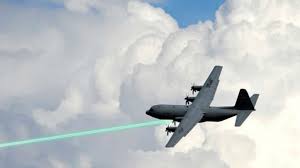
Breaking News
DRINK 1 CUP Before Bed for a Smaller Waist
 Nano-magnets may defeat bone cancer and help you heal
Nano-magnets may defeat bone cancer and help you heal
 Dan Bongino Officially Leaves FBI After One-Year Tenure, Says Time at the Bureau Was...
Dan Bongino Officially Leaves FBI After One-Year Tenure, Says Time at the Bureau Was...
 WATCH: Maduro Speaks as He's Perp Walked Through DEA Headquarters in New York
WATCH: Maduro Speaks as He's Perp Walked Through DEA Headquarters in New York
Top Tech News
 Laser weapons go mobile on US Army small vehicles
Laser weapons go mobile on US Army small vehicles
 EngineAI T800: Born to Disrupt! #EngineAI #robotics #newtechnology #newproduct
EngineAI T800: Born to Disrupt! #EngineAI #robotics #newtechnology #newproduct
 This Silicon Anode Breakthrough Could Mark A Turning Point For EV Batteries [Update]
This Silicon Anode Breakthrough Could Mark A Turning Point For EV Batteries [Update]
 Travel gadget promises to dry and iron your clothes – totally hands-free
Travel gadget promises to dry and iron your clothes – totally hands-free
 Perfect Aircrete, Kitchen Ingredients.
Perfect Aircrete, Kitchen Ingredients.
 Futuristic pixel-raising display lets you feel what's onscreen
Futuristic pixel-raising display lets you feel what's onscreen
 Cutting-Edge Facility Generates Pure Water and Hydrogen Fuel from Seawater for Mere Pennies
Cutting-Edge Facility Generates Pure Water and Hydrogen Fuel from Seawater for Mere Pennies
 This tiny dev board is packed with features for ambitious makers
This tiny dev board is packed with features for ambitious makers
 Scientists Discover Gel to Regrow Tooth Enamel
Scientists Discover Gel to Regrow Tooth Enamel
 Vitamin C and Dandelion Root Killing Cancer Cells -- as Former CDC Director Calls for COVID-19...
Vitamin C and Dandelion Root Killing Cancer Cells -- as Former CDC Director Calls for COVID-19...
US Air Force To Launch Laser-Equipped Jets In Early 2020s

The Pentagon has partnered with Stellar Science to expand the US Air Force modeling technology behind its next-generation airborne laser weapons.
Aircraft-mounted laser weapons have the potential to incinerate opposition missile systems, air-to-air fighter jets, drones, ships and ground forces, all without using explosive force, according to Scout Warrior.
Laser technology could replace existing, high-cost missiles, reducing the military's ammunition costs. Air force officials hope to begin testing the weapons in 2021 when the $7 million Stellar Science contract expires. Stellar Science has been actively working on spatial models and simulations for the weapon since 2014.
The project will focus on boosting the power of laser weapons, from 10 kilowatts to 100 kilowatts, air force officials said. The devices use extremely high levels of heat and light energy to "incinerate" targets, senior officials said. And because the 'ordinance,' in this case the laser beam, moves at the speed of light, weapons will be able to eliminate fast-moving targets the moment they are within range.
But obstacles remain before the futuristic weapons are combat-ready. Engineering a compact power source for a laser weapon that is small enough to be mounted on an F-15, F-16, or an F-35 is still in the works, Gregory Zacharias, a chief air force scientist, told Scout. Until the technology is developed, officials have said they plan to fire lasers from larger C-17s and C-130s.



